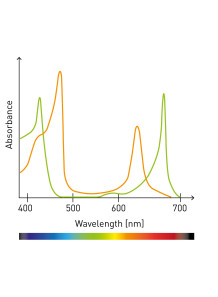SDS-PAGE Anti-Glycation Assay
- Product Code: 127157
Analysis of Anti-Glycation using SDS-PAGE
Analysis of Anti-Glycation using SDS-PAGE
This anti-glycation test evaluates the inhibitory effect of a test sample (e.g., Ume extract) on the Maillard reaction-induced crosslinking. The Maillard reaction is a non-enzymatic glycation process that leads to the formation of advanced glycation end products (AGEs), which are associated with various diseases. The test involves the reaction of ribose (a sugar) with lysozyme (a protein) in the presence of the test sample. The extent of glycation is assessed by measuring the formation of lysozyme dimers using SDS-PAGE and Coomassie Brilliant Blue staining. Aminoguanidine hydrochloride is used as a positive control, while sodium phosphate buffer serves as a negative control.
Key Points:
The test measures the inhibition of glycation-induced protein crosslinking.
Ume extract is the test sample, while aminoguanidine hydrochloride serves as a positive control.
The extent of glycation is determined by the formation of lysozyme dimers using SDS-PAGE.
Proper sterilization and pH adjustment are critical for accurate results.
| Step | Procedure | Expected Result | |||
|---|---|---|---|---|---|
| There is no item to display. | |||||
Analysis of Anti-Glycation using SDS-PAGE
Analysis of Anti-Glycation using SDS-PAGE
This anti-glycation test evaluates the inhibitory effect of a test sample (e.g., Ume extract) on the Maillard reaction-induced crosslinking. The Maillard reaction is a non-enzymatic glycation process that leads to the formation of advanced glycation end products (AGEs), which are associated with various diseases. The test involves the reaction of ribose (a sugar) with lysozyme (a protein) in the presence of the test sample. The extent of glycation is assessed by measuring the formation of lysozyme dimers using SDS-PAGE and Coomassie Brilliant Blue staining. Aminoguanidine hydrochloride is used as a positive control, while sodium phosphate buffer serves as a negative control.
Key Points:
The test measures the inhibition of glycation-induced protein crosslinking.
Ume extract is the test sample, while aminoguanidine hydrochloride serves as a positive control.
The extent of glycation is determined by the formation of lysozyme dimers using SDS-PAGE.
Proper sterilization and pH adjustment are critical for accurate results.
| Mechanism | - |
| Appearance | - |
| Longevity | - |
| Strength | - |
| Storage | - |
| Shelf Life | - |
| Allergen(s) | - |
| Dosage (Range) | - |
| Recommended Dosage | - |
| Dosage (Per Day) | - |
| Recommended Dosage (Per Day) | - |
| Mix Method | - |
| Heat Resistance | - |
| Stable in pH range | - |
| Solubility | - |
| Product Types | - |
| INCI | - |
Cart
No products



